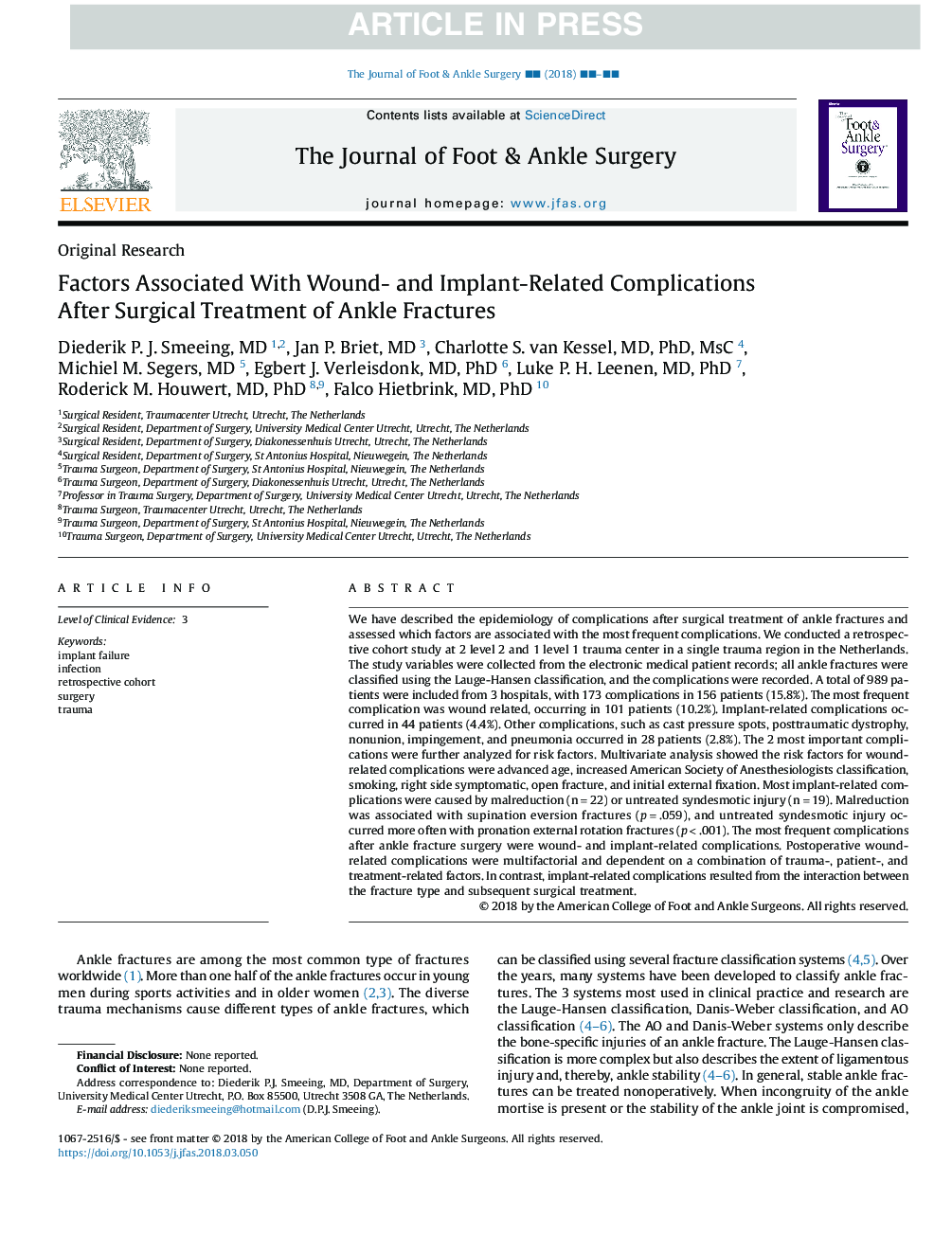| کد مقاله | کد نشریه | سال انتشار | مقاله انگلیسی | نسخه تمام متن |
|---|---|---|---|---|
| 8950719 | 1645790 | 2018 | 6 صفحه PDF | دانلود رایگان |
عنوان انگلیسی مقاله ISI
Factors Associated With Wound- and Implant-Related Complications After Surgical Treatment of Ankle Fractures
ترجمه فارسی عنوان
عوامل مرتبط با عوارض ناشی از زخم و ایمپلنت پس از جراحی شکستگی های مچ دست
دانلود مقاله + سفارش ترجمه
دانلود مقاله ISI انگلیسی
رایگان برای ایرانیان
کلمات کلیدی
3، شکست ایمپلنت، عفونت، گروه داوطلب گذشته عمل جراحی، تروما
موضوعات مرتبط
علوم پزشکی و سلامت
پزشکی و دندانپزشکی
ارتوپدی، پزشکی ورزشی و توانبخشی
چکیده انگلیسی
We have described the epidemiology of complications after surgical treatment of ankle fractures and assessed which factors are associated with the most frequent complications. We conducted a retrospective cohort study at 2 level 2 and 1 level 1 trauma center in a single trauma region in the Netherlands. The study variables were collected from the electronic medical patient records; all ankle fractures were classified using the Lauge-Hansen classification, and the complications were recorded. A total of 989 patients were included from 3 hospitals, with 173 complications in 156 patients (15.8%). The most frequent complication was wound related, occurring in 101 patients (10.2%). Implant-related complications occurred in 44 patients (4.4%). Other complications, such as cast pressure spots, posttraumatic dystrophy, nonunion, impingement, and pneumonia occurred in 28 patients (2.8%). The 2 most important complications were further analyzed for risk factors. Multivariate analysis showed the risk factors for wound-related complications were advanced age, increased American Society of Anesthesiologists classification, smoking, right side symptomatic, open fracture, and initial external fixation. Most implant-related complications were caused by malreduction (nâ=â22) or untreated syndesmotic injury (nâ=â19). Malreduction was associated with supination eversion fractures (pâ=â.059), and untreated syndesmotic injury occurred more often with pronation external rotation fractures (pâ<â.001). The most frequent complications after ankle fracture surgery were wound- and implant-related complications. Postoperative wound-related complications were multifactorial and dependent on a combination of trauma-, patient-, and treatment-related factors. In contrast, implant-related complications resulted from the interaction between the fracture type and subsequent surgical treatment.
ناشر
Database: Elsevier - ScienceDirect (ساینس دایرکت)
Journal: The Journal of Foot and Ankle Surgery - Volume 57, Issue 5, SeptemberâOctober 2018, Pages 942-947
Journal: The Journal of Foot and Ankle Surgery - Volume 57, Issue 5, SeptemberâOctober 2018, Pages 942-947
نویسندگان
Diederik P.J. MD, Jan P. MD, Charlotte S. MD, PhD, MsC, Michiel M. MD, Egbert J. MD, PhD, Luke P.H. MD, PhD, Roderick M. MD, PhD, Falco MD, PhD,
